Monday June 10th, 2024, Hearing 34
“Repression also reached the civilian population that the army considered sympathetic or collaborator to the guerrilla.” Kate Doyle
On Monday, attorney Peralta, defense of Benedicto Lucas Garcia, began her interrogation of expert witness Kate Doyle. The expert explained the legal steps involved in the examination of the declassified documents. Doyle indicated to Lucas Garcia’s defense that a thorough analysis of the documents shows that the repression was not only against the guerrillas, but that the repression also reached the civilian population that the army considered sympathetic or collaborator to the guerrilla.
After the defense’s cross-examination, the court asked the expert witness how the national archives work in the U.S. Doyle responded that on the one hand there are the archives of each institution, and that her organization, the National Security Archive, operates with certified copies of official documents issued by the State agencies themselves. She pointed out that anyone can request copies of these documents, thus concluding her presentation at the hearing.
“The soldiers said we were guerrillas, but we didn’t have a weapon, we were workers.” Witness Tomás Chamay López (✝)
The hearing continued with the hearing of the testimony of Tomás Chamay López (✝) which was recorded as evidence in advance of the trial on October 23, 2014. At that time, Don Tomás, was 60 years old, was originally from Chisis and testified about two events.
In 1982, Don Tomás had 5 children of 10, 8, 6 and 4 years old and a last one who was born after his escape to the mountain. The first event Don Tomas narrated was a massacre committed by the army in Finca San Francisco, located in San Juan Cotzal on May 24, 1981:
“I went to the market with my wife in Finca San Francisco, when we were there, the soldiers arrived and put all the people in line, some of them beating them with a gun so that they would get in line. When we were already lined up they started shooting. Everyone ran off in all directions, we dispersed, and it wasn’t until later that I found my wife.”
Don Tomás related that that day two people from Chisis died and that since it was Sunday market day, there were people from many villages, old people, children, babies, people of all ages who died. When questioned by the Public Prosecutor’s Office about how he identified the soldiers, Don Tomás pointed out that the soldiers were dressed in a brown color and their faces were covered with balaclavas, and they could be distinguished because “they had good shoes.” He added: “The soldiers said we were guerrillas, but we didn’t have a weapon, we were workers.”
After finding his wife, they returned together to Chisis. The next event he recounted was the Chisis massacre on February 13, 1982: “We were in the house, we heard shootings and managed to escape. They started killing people at about 5:30 a.m. The soldiers had the town under surveillance and they came from the detachment.” The witness expressed:
“I don’t know what the president had in his heart, his mind, that he had us killed. We are people, I don’t understand why they had us killed. We were working people, I lost three brothers”.
The witness continued his story with his time in the mountains, where he was hidden for a year and three months: “I went to hide in a mountain. Many of the people were burned to death inside their houses, others were shot and others were cut down. While we were in the mountain, we kept being chased by the soldiers, what they wanted was to kill us all.”
Don Tomás testified about the famine they went through in the mountain and the constant siege by the soldiers. He finally made it with his family to the village of Santa Abelina. When asked by the Public Prosecutor’s Office what he expected from the trial Don Tomás replied:
“That there will be a law, a solution. The government is there to protect the people, they killed many people, they burned our corn, what is the corn’s fault, if it feeds us, it serves to survive, I would like there to be a law.”
Tuesday, June 11th, 2024, Hearing 35
On Tuesday Eyal Weizman, expert in Forensic Architecture, testified before the court. He is a professor at Goldsmiths University of London. He joined the hearing by videoconference from the Guatemalan Embassy in London and presented his expert report, “Scorched Earth: Environmental Violence in the Ixil Territory.”
The military campaign conducted between 1980-1983 included the destruction of buildings and forests. The expert presented aerial photography showing the before and after. There is clear destruction of houses and agriculture fields. In the area of Pexla, he showed an aerial photo with two model villages where people were forced to, 135 homesteads destroyed, and 19 homesteads left.
His team also conducted visits to the area to compare the conclusions drawn from the aerial photographic evidence.
The expert explained that the culture of the Maya Ixil depends on a very particular relationship between the mountains, the forests, fields, and villages. He said he believes there was genocide in Guatemala not only because of the massacres of civilians but also because of a destruction of the conditions of life.
Wednesday, June 12th, 2024, Hearing 36
“In the case of the Ixil people, we were able to see that they have a fundamental relationship with nature from a spiritual and cosmological point of view but also from the point of view of survival as a population.” Paulo Tavares
The testimony of Paulo Tavares, a forensic architect from Brazil, exposed the systematic environmental violence perpetrated against the Ixil people during the Internal Armed Conflict in Guatemala. Tavares together with Eyal Weizman conducted in 2016 an environmental expertise in the Ixil region. He presented via videoconference the conclusions of his expertise.
His conclusions are evidence of how the counterinsurgency war aimed to transform the way of life, culture and social organization of the Ixil People.
Tavares describes the military strategies used to destroy the fundamental relationship that the Ixil people had with the land, both from a spiritual, cultural, cosmological and survival point of view. The loss of their land and their ties prevented them from maintaining their traditional agricultural practices. This rupture in their relationship with the land has led to social disorganization, breakdowns in their cultural structure and difficulties for their development as an Indigenous population.
These strategies include “combing” and “scorched earth” operations, the destruction of farms and forests, and the forced displacement of the population.
Tavares advocates for a comprehensive reparation that includes the restoration of the environment and the recognition of Ixil territories from an ecological, not only legal, perspective. This reparation should contemplate both symbolic and environmental aspects to allow the recovery of the culture and way of life of the Ixil people.
“The violence is not only to be removed from the house, but actions against the environment were part of the violence. The exercise brought the idea that to ‘kill the fish you have to drain the water’, the fish is the Ixil population and the water is their environment. It was a strategy against the entire environment of the Indigenous population, it is a genocidal intentionality.” – Paulo Tavares
Tavares’ testimony provides compelling evidence of environmental violence as a form of genocide against the Ixil people. His analysis highlights the importance of recognizing the profound impact that environmental destruction has had on the culture and development of the Ixil people, and the need for comprehensive reparations that address both the environmental and symbolic dimensions of this crime.
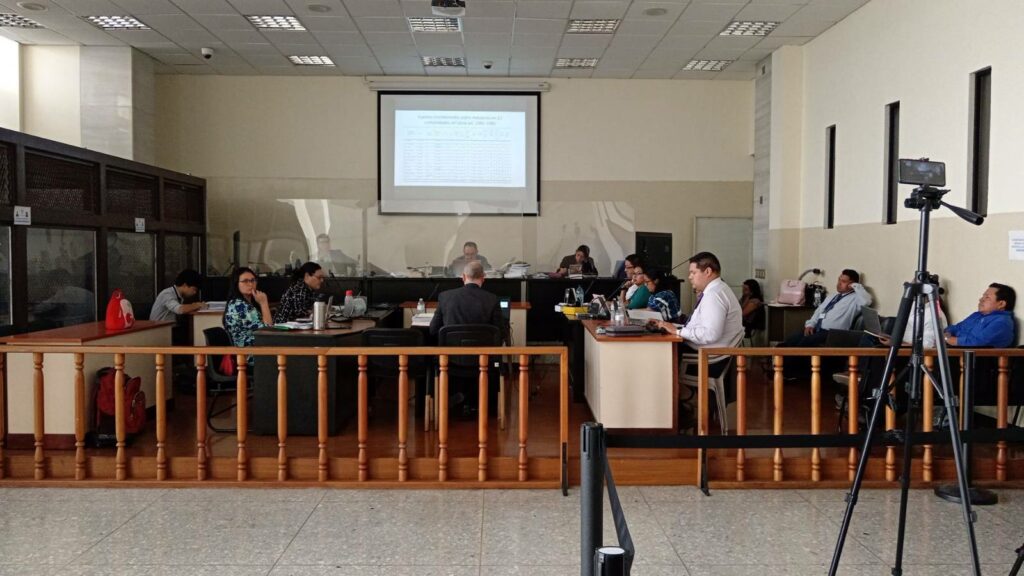
Photo by NISGUA. Guatemala City. June 2024

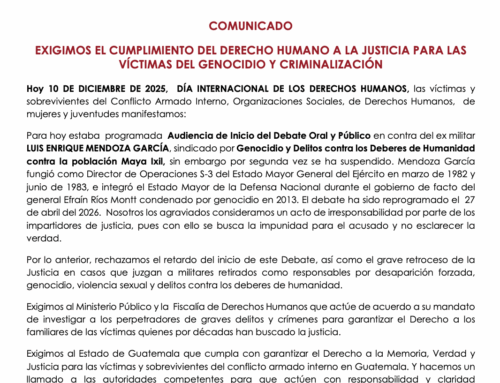
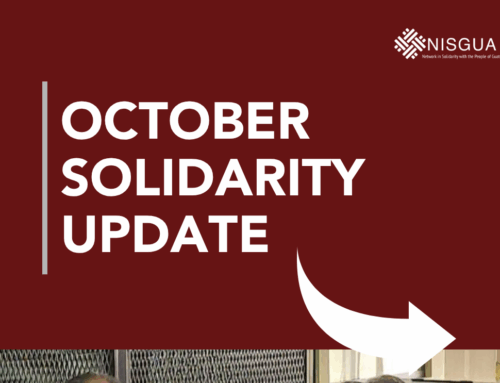
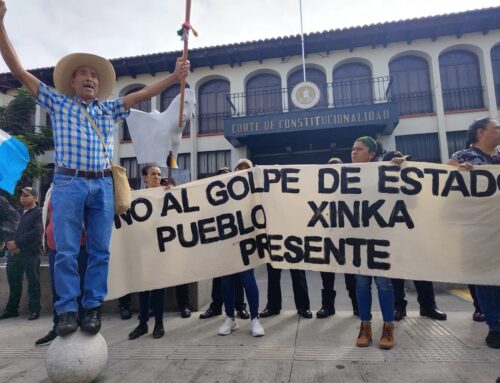
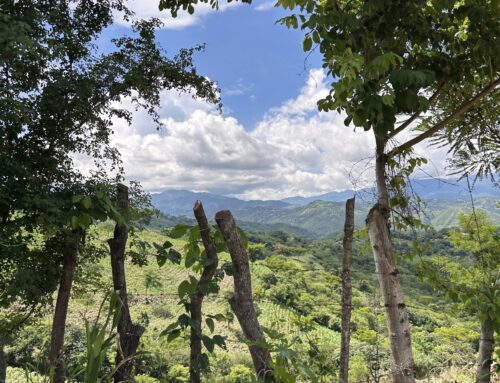
Leave A Comment